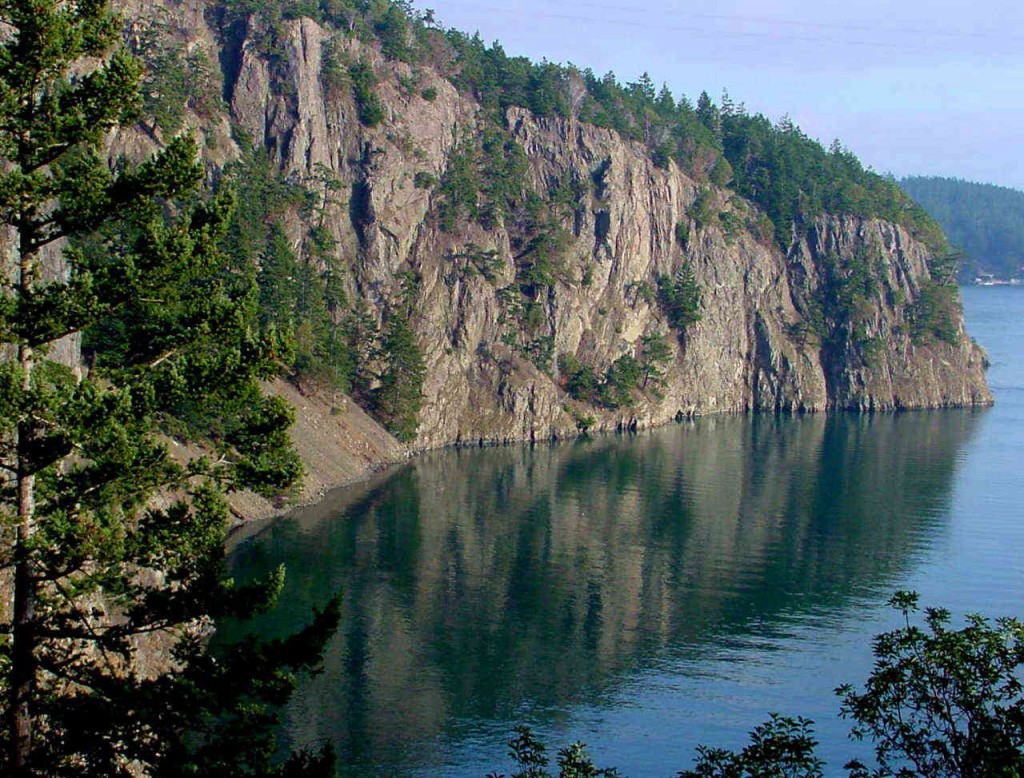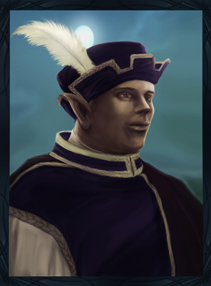Explorers in the world of Relistan that are willing to brave the dangers of nautical travel are slowly filling in previously unexplored corners of the map. One such place that was recently discovered is the island of Draycea.
The Island of Draycea
Most know the island of Draycea for its sheer cliffs, natural beauty, and pleasant climate. Despite a lush jungle, and active volcano, Draycea’s most famous feature is its lack of beaches. The island’s ocean borders consist entirely of level, raised cliffs. Most scholars agree that magic or another bizarre force gave the huge island its unique oceanic borders, but the exact nature of the anomaly remains a subject of excited debate. One common theory posits that the progenitors of the island’s indigenous people raised the land to protect them from a global flood. Variations on this theme name gargantuan aquatic terrors or vast armies from nearby lands or boiling seas as the reason the gods erected the “Draycean Wall”.
The dominant humanoid race on Draycea are a hybrid form of aquatic and jungle elf who call themselves the Nihuru. Most Nihuru settlements occupy the sheer island borders – vertical cliff dwellings that house hundreds of elves above and below the waves. Early in life, Nihuru children learn the joy of cliff diving and deep ocean swimming. They take up work as craftsmen, farmers, or warriors beginning in their twentieth year.
The Nihuru deal in a profitable trade of pearls, shells, and exotic fruits and vegetables. This trade inspired Nihuru leadership to build luxurious vacation towns around the island’s perimeter in an effort to draw visitors from neighboring lands. Despite the danger of traveling the seas, many wealthy merchants risk the journey for the chance to sample the luxuries, and get their hands on expensive goods found nowhere else. While larger ships must drop their anchors in deep water, the cliffs around these small towns have special hoists, crafted to support the weight of a small boat, lifting it out of the water and carrying it, and anything aboard up the cliff side safely.
The natural ecology of Draycea displays a virtually undisturbed harmonic balance. The native races determine which animals to hunt based on any imbalance of predator or prey. Great storms fell ancient trees, preventing destructive overgrowth, and immense man-eating plants thin the number of newcomers who discover predators too late. The indomitable Smoking Mountain rises at the island’s center, belching ash or lava once or twice each year. While even these mundane yet explosive eruptions cause a great amount of distress throughout the island, every eleventh generation it emits a blast of molten adamantine forcing a major evacuation. Many a merchant has wandered the isle in search of a source of this rare and exotic metal, but none have found it. Naturally, the natives take full advantage of the material, harvesting as much as they can upon returning to the island, and crafting it into a wide variety of items for sale to the next group of luxury seekers that drops anchor nearby.
Over time, foreign curiosity led to exploration by unsanctioned explorers. The staggering wealth in natural resources taken for granted by the elves who call Draycea home created an instant buzz. The Nihuru increased their guard and declined every offer of charter from outside suitors. Natives expressed concern over the safety of alien explorers, but most merchants dismissed their reason as posturing. The disappearance of several poachers and thieves quieted those rumblings and trade companies made their apologies, sending replacement negotiators to begin trade talks anew.
For decades, the Nihuru have rejected most appeals to explore the island, enforcing the ban on outside explorers with decrees of banishment or imprisonment. Light offenders, or those with the right connections, might enjoy a house arrest until they can arrange a way home. For more severe transgressions, or repeat offenders, the locals hold a somber ceremony. A clerk announces the accused’s crimes while stripping the offender of all possessions and forcing them off one of the high cliffs. With no valuables, and no transportation, the outcome of those forced to find mercy from a still ship or perish on the waves is almost certain.
Those who would risk everything to plunder Draycea’s treasures might treat with tribes of grendylow and merrow, who feed on any wanderers they find beneath the waves. Opportunists who repel these barbaric creatures may extort the location of undersea tunnels that lead into the heart of Draycea’s jungle-covered mountains. Many who fear becoming food for savages or being forced to swim back home have only one recourse: potent travel magic.
The Nihuru know they are powerless to stop seasoned magic users. They grant the island’s only permits for exploration to those who prove they can move to the island’s interior and defend themselves with strength. Sages resolved to know the secrets beyond the cliffs contract with powerful sorcerers and wizards, who in turn contract with experienced body guards. Some explorers write of magma flows rich in adamantine. Others record majestic colonies of awakened dinosaurs who forsake their natural food chain and unite when a dire threat presents itself. Another oddity is the regular occurrence of carved standing stones sitting alone in the jungle. These stones lie covered in overgrowth since no tribe in centuries has claimed knowledge of, or responsibility for them.
Of course, these expeditions lead to more rumors about the island’s strange history. Those with the means to research rubbings from the standing stones, or compare the oral histories of talking dinosaurs, speak of far more grave possibilities. The bard-wizard Calledar theorized that the raising of the cliffs that make up the Draycean Wall may not serve to defend the island and its treasures from the outside world. Instead, he believes the island defends the world from something that lies within or underneath. Many sages study the informal discipline of “Drayceology” (the study of the island, it’s history, and inhabitants) to determine what the standing stones mean for those living off the island as well as those living on it.
Nihuru Characters
Nihuru are humanoids that are defined by their class levels – they do not possess racial Hit Dice. All Nihuru have the following racial traits:
+2 Dexterity, +2 Charisma: Nihuru are as graceful and elegant as their surface cousins, but life along the cliffs and beneath the waves has made them much hardier than their kin.
Medium: The Nihuru are medium sized creatures and have no bonuses or penalties due to their size.
Normal Speed: Nihuru have a land speed of 30 ft.
Aquatic: Nihuru possess the aquatic subtype and can breathe water. Their aquatic nature also grants them a swim speed equal to their normal land speed. Nihuru are amphibious, able to live contentedly both above and below the water’s surface.
Elfblood: Nihuru are descended from multiple elven bloodlines, and thus possess the elf subtype.
Low-Light Vision: All Nihuru have low-light vision.
Languages: Nihuru begin play speaking Common and Elven. Those with high Intelligence scores can choose any of the following bonus languages: Aboleth, Aklo, Aquan, Draconic, Sahuagin, and Sylvan.
Contributed by: Steven T. Helt
Find more about the Horsemen, reviews of their work and their current projects HERE.



Sounds like a place alchemy would like to explore